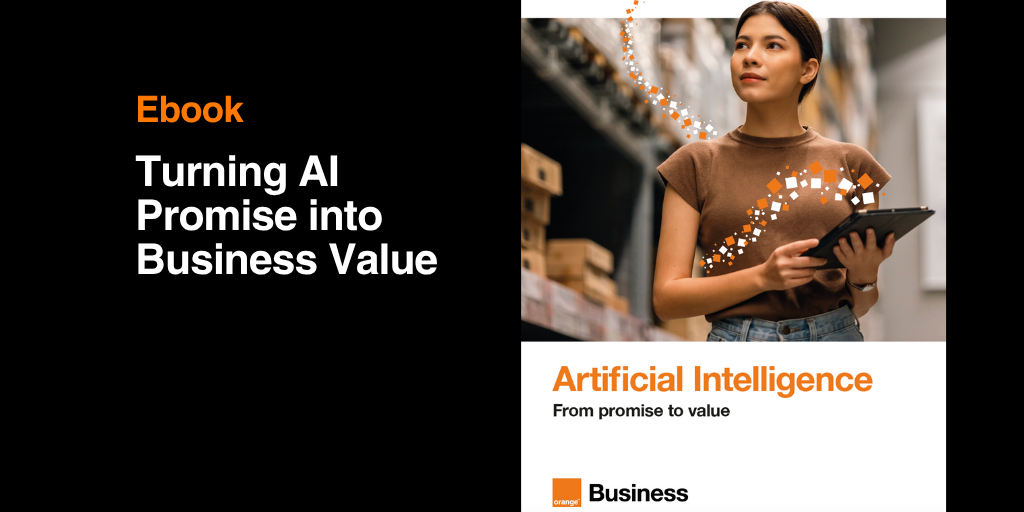Business Intelligence (BI) and Data Intelligence (DI) are closely related concepts, yet they serve distinct purposes and are complementary in nature.
What Does “Intelligence” Mean?
Before comparing Business Intelligence and Data Intelligence, it’s important to clarify what is meant by “intelligence.” We need to understand its English meaning, as in “Central Intelligence Agency (CIA)”—in other words, intelligence gathering (just as we speak of “ambient intelligence” in the Internet of Things, or IoT).
So, it’s not so much about “thinking” as it is about gathering and consolidating data to give it meaning.
What Is Business Intelligence?
Business Intelligence (BI) uses both real-time data generated by all company departments and historical data. These are stored in data warehouses or data lakes
(see also: Data Warehouse, Data Lake, Data Mesh – What’s the Difference?).
Business Intelligence is a set of processes for analyzing operational data. These data are transformed into actionable information for end users to help them make informed decisions.
As statistician Edwards Deming famously said: “In God we trust. All others must bring data.”
“Without data, you’re just another person with an opinion.”
BI is based on understanding operational processes and their data. It helps you describe, explain, and most importantly, predict.
BI is based on understanding operational processes and their data. It helps you describe, explain, and most importantly, predict.
With the implementation of a data warehouse and a data visualization tool, BI becomes a powerful asset for making informed decisions.
The Key Steps of BI
The raw data, which are not usable as-is by users, go through these stages:
- Data Cleaning: Identifying relevant data for analysis and correcting inconsistencies (also called data cleansing, data hygiene).
- Data Modeling: Prepares the data for integration; the analysis may involve statistics or data mining.
- Data Visualization: Presents consolidated, actionable data in visual and aesthetic formats—the final step for decision-making (hence the term decision system).
Use Business Intelligence to Make Informed Decisions
With a proper data warehouse and visualization tools, BI helps you understand, explain, and anticipate.
For example, sales analysis can reveal what was sold and how (by period, location, category, etc.). It seeks to understand the why:
- Why were sales higher in September?
- Why are they down in Italy?
- Why were men’s clothing sales unusually high?
- Why did some products succeed while others failed?
And of course, BI aims to predict future sales—to sell more and better than competitors.

What is Data Intelligence?
Data Intelligence is a discipline within Data Analytics, applied to Business Intelligence. It draws on Data Science for the analysis and exploration of data.
Data Intelligence is oriented towards shaping future strategies.
It is an evolution of Business Intelligence (though not a replacement), made possible by two major technological revolutions: Big Data and Artificial Intelligence.
- Big Data enables the collection, storage and analysis of massive datasets (point-of-sale transactions, browsing histories, mobile applications, geolocation, social networks, etc.), whether structured or unstructured.
- Artificial Intelligence (AI) is transforming data analysis methods through complex algorithms.
It is through this convergence of Big Data and AI that companies can, for example, predict subscription cancellations (churn management) or anticipate when a customer is likely to place an order.
Decision-makers quickly understood the potential…
💡 Collecting data is not enough!
Simply gathering large datasets is not sufficient to generate knowledge. Only Data Intelligence can capture and process the information that reveals patterns and trends in consumer behaviour – the insights companies are most eager to find.
While Data Intelligence may seem almost miraculous in fields like marketing and risk management (insurance, cybersecurity), it is also proving highly valuable in healthcare. The recent global pandemic highlighted just how critical it is to forecast hospital admissions, demand for medication, medical consultations, and teleconsultations.
In hospitals, for instance, Data Intelligence has already made it possible to anticipate needs and, more importantly, to rethink processes and services in depth.
Two disciplines within Data Analytics
Business Intelligence and Data Intelligence are both part of Data Analytics, which brings together descriptive, predictive and prescriptive approaches to data analysis.
Some even consider Business Intelligence to be a subset of Data Intelligence. In reality, both serve the same fundamental purpose: to support decision-making in organisations.
The difference lies in their impact: Business Intelligence helps optimise margins, while Data Intelligence highlights trends and enables the design of new strategies.














Comments (0)
Your email address is only used by Business & Decision, the controller, to process your request and to send any Business & Decision communication related to your request only. Learn more about managing your data and your rights.